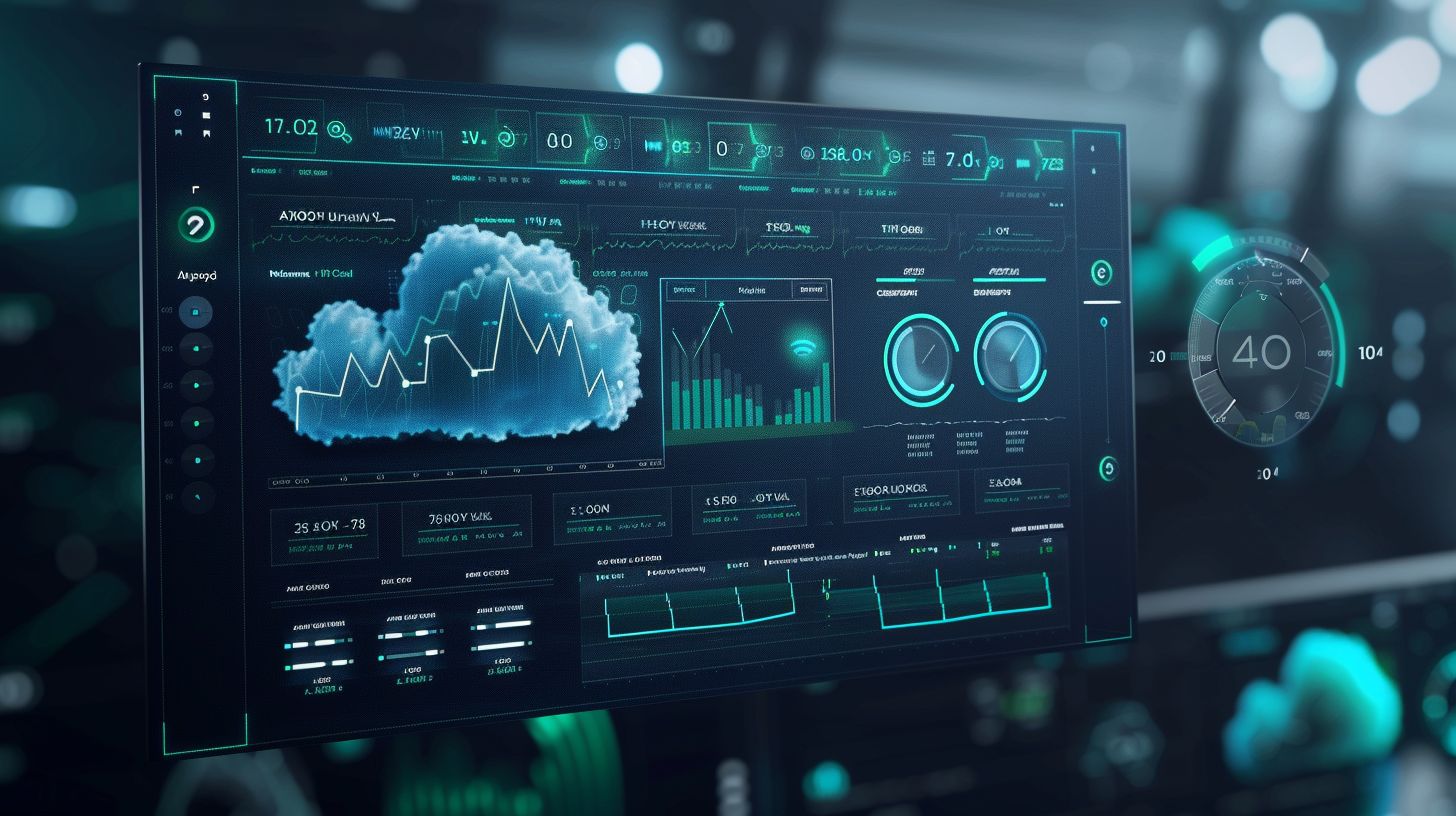Transforming data in cloud ETL (Extract, Transform, Load) is essential for turning raw data into usable insights. Here's a quick summary of what's covered in the article:
- Why Cloud ETL Matters: Faster processing, lower costs, and scalability compared to traditional ETL methods.
-
Data Mapping: Align source and target data formats for consistency.
- Data Cleaning: Tools like AWS DataBrew and Glue simplify data preparation.
- Data Summarization: Use aggregation to extract insights (e.g., daily sales totals).
-
Modern Tools:
- Real-time platforms like DataCater and Estuary Flow for faster insights.
- Machine learning tools like Dptron to automate repetitive tasks.
-
Challenges and Solutions:
- Obstacles: Data quality, integration complexity, and performance optimization.
- Fixes: Strategies like parallel processing and caching to improve speed and efficiency.
- Cost Management: Tips like auto-scaling and reconfiguring queries to cut expenses.
- Security and Compliance: Encryption, access controls, and adherence to regulations like GDPR.
Quick Comparison Table
| Feature | Traditional ETL | Cloud-Based ETL |
|---|---|---|
| Speed | Slower, size-dependent | Faster with cloud power |
| Data Flexibility | Structured data only | Structured + unstructured |
| Cost | High setup/maintenance | Pay-as-you-go pricing |
| Scalability | Resource-heavy | Scales on demand |
Cloud ETL is reshaping how businesses handle data, offering faster, more flexible, and cost-effective solutions while addressing challenges like data security and compliance.
AWS Glue ETL Data Pipeline With Advanced Transformations
Core Data Transformation Methods
Cloud ETL uses specific methods to turn raw data into actionable insights, ensuring the data is accurate, consistent, and usable.
Data Mapping Basics
Data mapping connects source data to its target destination. This ensures the data stays reliable and consistent throughout the integration process [3].
| Mapping Component | Purpose | Key Consideration |
|---|---|---|
| Source Definition | Identifies the original data structure | Field types and formats |
| Destination Rules | Specifies the target data format | Data validation requirements |
| Transformation Logic | Outlines how data is converted | Alignment with business rules |
| Error Handling | Manages exceptions during the process | Data quality thresholds |
Start by defining the data elements. Then, create and test the transformation rules to ensure everything aligns [4].
Data Cleaning Methods
After mapping, focus on cleaning the data to maintain accuracy. AWS provides several tools to simplify this process [5]:
- Large-Scale Processing: Amazon EMR is ideal for handling large datasets and performing frequent, complex cleaning tasks. It’s designed for distributed processing at scale.
- Automated Cleaning: AWS DataBrew offers a no-code solution for preparing and cleaning data. It’s great for teams that need fast results without heavy coding.
-
Specialized Cleaning: AWS Glue is tailored for infrequent ETL jobs. It’s particularly useful for tasks such as:
- Standardizing text columns
- Managing empty fields
- Anonymizing sensitive information like PII
Data Summary Techniques
Once the data is mapped and cleaned, summarizing it helps extract insights. Aggregation combines data from different sources to create meaningful summaries [6].
| Aggregation Type | Use Case | Example Application |
|---|---|---|
| Time-based | Analyzing periods | Daily sales totals |
| Spatial | Grouping by location | Regional performance metrics |
| Attribute | Summarizing categories | Product line performance |
Fact tables should maintain a detailed level of granularity [7]. To speed up queries while keeping data accessible, organizations can create pre-aggregated tables for different intervals, like hourly, daily, or monthly [7].
This structured process ensures data is effectively transformed, cleaned, and summarized while preserving accuracy.
Modern Data Transformation Tools
Modern cloud ETL platforms are changing the game by enabling real-time data processing and transformation. These tools simplify workflows and allow organizations to quickly extract insights from their data.
Live Data Processing
Real-time data processing offers instant insights, and several platforms stand out in this space:
| Platform | Key Features | Performance Metrics |
|---|---|---|
| DataCater | Python transforms, Kafka integration | Saves 40% of time in pipeline management |
| Estuary Flow | Multiple connectors | Latency under 100ms |
| Crosser | Edge computing, hybrid deployment | 500MB RAM footprint |
DataCater is an excellent fit for development teams working with Python. It includes an integrated development environment (IDE) and native Apache Kafka support, making it highly effective for streaming applications [8].
"As a Data Engineer, I know how difficult it is to deploy a streaming solution. With DataCater it is made a lot simpler and without writing code. I don't have to worry about scaling and I can manage my pipelines with an easy-to-use online interface."
- Dr. Nawar Halabi, Machine learning engineer [8]
Estuary Flow delivers enterprise-level features along with compliance certifications such as HIPAA, GDPR, and SOC 2 Type II. Its architecture is designed for high performance and cost efficiency, making it a competitive alternative to platforms like Confluent and Fivetran [9].
With these real-time tools, machine learning takes data transformation a step further by automating preparation tasks.
Machine Learning for Data Prep
Machine learning enhances data preparation by automating repetitive and complex processes. Analysts often spend up to 80% of their time cleaning data [11], and ML-powered tools can significantly reduce this workload while ensuring consistency between training and prediction stages.
Dptron is a strong example, using PySpark for distributed processing and applying machine learning to automate data preparation tasks [10].
Key factors to consider when using ML for data transformation include:
- Enterprise Data Warehouse Integration: A centralized data warehouse helps avoid the need for separate ETL pipelines for individual projects [11].
- Automated Preprocessing: Using TRANSFORM clauses allows preprocessing to occur automatically during both training and prediction, ensuring uniform data handling [11].
- Human Oversight: While automation is powerful, human supervision is essential to address unexpected issues and fine-tune performance.
Machine learning and real-time processing together create a powerful combination for modern data transformation.
sbb-itb-695bf36
Making Cloud ETL Work Better
Improving cloud ETL systems means tackling data surges and managing costs effectively. By allocating resources wisely and keeping expenses under control, organizations can enhance the efficiency of their ETL processes.
Handling Growth and Speed
Dealing with increasing data volumes requires smart strategies. A well-structured cloud ETL system can boost processing speed while maintaining performance levels. These methods build on earlier discussions about data transformation by focusing on performance challenges.
Techniques like parallel processing and in-memory computing can significantly increase throughput. For example, a major investment bank in the financial sector cut its risk calculation time by 50% using these methods, which enabled quicker decision-making and better compliance with regulations [12].
To handle real-time data more effectively, consider these strategies:
| Strategy | Impact | Implementation Example |
|---|---|---|
| Micro-batching | Balances memory usage and processing speed | Global e-commerce companies improved inventory management |
| Pre-processing filters | Reduces data load and latency | Telecom operators reduced latency by over 40% [12] |
| In-memory processing | Speeds up data transformations | Healthcare providers achieved faster processing |
"ETL bottlenecks are not just technical hurdles; they are business challenges that require a multi-faceted strategy to solve." – Hilary Mason, Data Scientist, Entrepreneur, and co-founder of Fast Forward Labs [12]
These strategies ensure scalability and speed, complementing earlier data transformation techniques.
Reducing ETL Costs
Managing cloud ETL costs starts with optimizing resource use. Efficient resource management is essential for keeping cloud ETL operations cost-effective.
For instance, dbt Labs reduced model runtime by 90 minutes, saving $1,800 per month on Snowflake credits [13]. Similarly, Total Wine streamlined its code database, cutting data platform costs by 10–15% [13].
Here are additional ways to optimize resources:
- Use auto-scaling to adjust resources dynamically based on workload needs.
- Run non-critical tasks on spot instances, which can cut costs by up to 90% [14].
- Take advantage of cloud provider savings plans, which can lower compute costs by up to 72% [15].
Paxos, for example, slashed its monthly data platform costs by over 50% by reconfiguring SQL queries [13]. These cost-saving measures align with scalability efforts, ensuring long-term efficiency.
To get the most out of your cloud ETL investments, focus on strong monitoring and logging practices. Tracking performance helps identify areas for improvement, while regular audits of resource usage ensure both efficiency and high data quality.
Data Safety and Rules
Ensuring data security during cloud ETL processes requires strong measures and strict adherence to regulations. This balance between accessibility and protection is crucial for maintaining operational efficiency and meeting compliance standards.
Data Protection Steps
A layered strategy is key to securing data throughout its lifecycle. Core elements include encryption, access controls, immutable storage, and data loss prevention. These tools help reduce exposure to risks and safeguard critical information.
| Security Measure | Purpose | Implementation Impact |
|---|---|---|
| Encryption | Protects data at rest and in transit | Reduces the risk of breaches |
| Access Controls | Limits unauthorized access | Enforces strict authentication and authorization |
| Immutable Storage | Blocks unauthorized changes | Defends against ransomware attacks |
| Data Loss Prevention | Mitigates data leakage risks | Minimizes exposure of sensitive information |
At the field level, sensitive data can be secured using methods like encryption, data masking, and hashing. For instance, AWS encrypts all data transmitted between regions via its global network [18]. Additionally, traffic between Availability Zones is automatically encrypted [18].
Following Data Laws
Technical safeguards alone are not enough. Strong governance practices are essential for compliance with regulations like GDPR and CCPA.
- Data Mapping: Create detailed maps to track personal data flow through systems. This is vital for GDPR compliance and supports Data Protection Impact Assessments (DPIA) [16].
- ETLG Implementation: Use Extract, Transform, Load for Data Governance (ETLG) to apply lightweight transformations for secure and compliant data management [17].
- Access Controls: Enforce role-based permissions based on the principle of least privilege.
Organizations should also document their processes, conduct regular audits, and implement secure data disposal methods. For example, Azure Information Protection provides cloud-based tools for classifying and securing documents and emails [19].
External Data Exchange
Securing external data transfers is another critical aspect. Organizations can choose from various methods based on their needs:
| Transfer Method | Use Case | Security Level |
|---|---|---|
| Site-to-Site VPN | Multi-location access | High |
| Point-to-Site VPN | Individual workstation access | High |
| ExpressRoute | Large dataset transfers | Very High |
| SSL/TLS Protocols | Standard data exchanges | Standard |
Wrap-up
Main Points
Modern cloud ETL techniques are reshaping how organizations handle data, offering better efficiency and cutting costs. By using methods like mapping, cleaning, and aggregation, businesses see major improvements. For example, Joybird reduced customer data integration engineering time by 93% using RudderStack [2].
Cloud infrastructure's processing capabilities also make ELT (Extract, Load, Transform) strategies more appealing. These approaches allow for flexible analytics while keeping data accurate and secure [1]. Companies have reported cost savings ranging from 10% to 50% by optimizing their transformation processes [13]. These outcomes highlight the importance of tailored strategies for effective data handling.
DiversiCloud Solutions
To tap into these benefits, many organizations are partnering with experts. DiversiCloud specializes in cloud ETL solutions that cut costs and improve performance. Their platform-agnostic approach helps businesses lower monthly cloud expenses by as much as 30% without compromising performance [20].
"At DiversiCloud, we're driven by a big yet simple vision: To revolutionize cloud operations for organizations of all sizes, making cloud solutions accessible and transformative for emerging small businesses and established global enterprises alike." [20]
Here are some of the key features DiversiCloud offers:
| Feature | Benefit |
|---|---|
| Custom Cloud Roadmaps | Supports long-term growth and success |
| Platform-Agnostic Solutions | Offers flexibility in choosing tools |
| Security Integration | Strengthens data protection |
| Cost Optimization | Lowers operational costs |
For businesses starting with cloud ETL, focusing on strong foundations and adopting modular approaches can ensure smooth and efficient data transformation over time [13].


